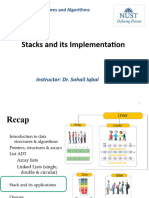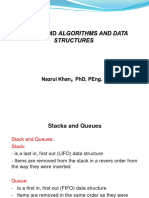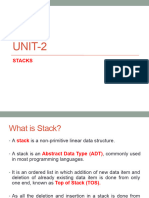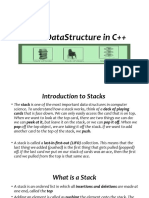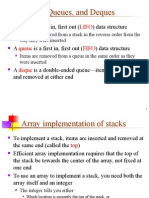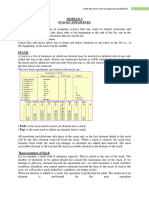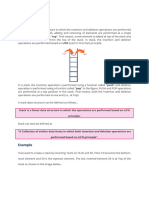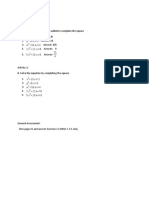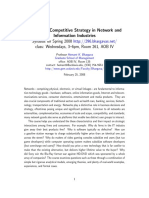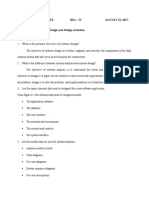0% found this document useful (0 votes)
65 views18 pagesStack
This document discusses stacks and queues as data structures. It defines stacks as last-in first-out (LIFO) structures and queues as first-in first-out (FIFO) structures. It then provides more details on stacks, including common applications, array and linked list implementations, and push and pop operations. The document also discusses queues at a high level, defining enqueue and dequeue operations, and provides an example of queue status changes.
Uploaded by
nurulalomadorCopyright
© © All Rights Reserved
We take content rights seriously. If you suspect this is your content, claim it here.
Available Formats
Download as PPTX, PDF, TXT or read online on Scribd
0% found this document useful (0 votes)
65 views18 pagesStack
This document discusses stacks and queues as data structures. It defines stacks as last-in first-out (LIFO) structures and queues as first-in first-out (FIFO) structures. It then provides more details on stacks, including common applications, array and linked list implementations, and push and pop operations. The document also discusses queues at a high level, defining enqueue and dequeue operations, and provides an example of queue status changes.
Uploaded by
nurulalomadorCopyright
© © All Rights Reserved
We take content rights seriously. If you suspect this is your content, claim it here.
Available Formats
Download as PPTX, PDF, TXT or read online on Scribd
/ 18

